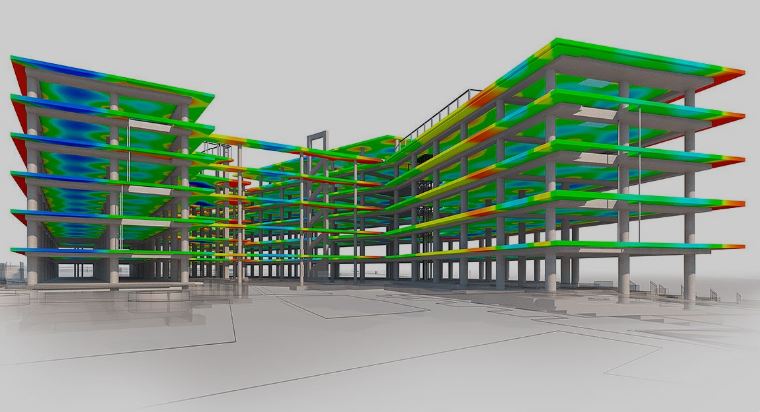Construction succeeds when decisions are based on facts. A tidy model gives you facts: counts, areas, volumes. A robust estimate turns those facts into money and a schedule. Put those two together, and a lot of guesswork disappears. Teams that use BIM Modeling Services alongside accurate estimating practices see fewer surprises once work starts.
This isn’t about shiny software. It’s about data that’s honest and repeatable. When a modeler and an estimator agree on the meaning of a wall, everyone avoids an argument later. That simple alignment produces better bids, cleaner procurement, and fewer change orders.
From model to estimate — the straightforward path
Start with the model. Make sure element names are consistent. Add minimal metadata: material, thickness, finish. Export quantities in a neutral format and hand them to the person responsible for pricing.
A short workflow that works:
- Build the model to a simple naming standard.
- Export quantities (CSV or IFC).
- Map model elements to line items in the estimating tool.
- Apply local rates, productivity factors, and contingencies.
- Validate totals against historical projects.
When BIM Modeling Services supply structured exports, the estimating step becomes a process, not a firefight. Estimators no longer waste hours measuring; they focus on judgment and risk.
Mapping: the small tool with big returns
Mapping links what the model calls “Wall Type A” with the exact line item an estimator needs. It sounds trivial. It isn’t. A single, maintained mapping sheet saves days over a year.
Good mapping captures:
- model element name → estimate line code
- unit of measure (area, length, count)
- default productivity assumptions
- notes on finishes and exclusions
Once that spreadsheet exists, Construction Estimating Services become faster and less error-prone. The mapping becomes a company asset — one you version, refine, and reuse.
How people change roles for the better
Once quantities are reliable, the estimator works on shifts. Instead of measuring, estimators analyze scope, test alternatives, and set sensible contingencies. Project managers use the same data for procurement and scheduling. That shift raises the overall quality of decisions.
Construction Estimating Services become less about repetitive tasks and more about delivering insight. Teams that adopt this mindset out-bid competitors and close projects with fewer disputes.
Measurable benefits you’ll see quickly
Integrating model-driven inputs and disciplined estimating produces tangible wins:
- Faster bid turnaround; automated takeoffs remove manual measuring.
- Fewer scope disputes; quantities originate from a shared file.
- Better procurement; suppliers get accurate counts earlier.
- Clearer audit trails for owners and insurers.
Those gains compound. Faster, reliable estimates mean you can bid more work without burning the estimating team out.
A practical pilot you can run this week
You don’t need a full corporate program to get started. Run a simple pilot on a short, representative project. Keep the scope narrow. Limit model revisions while you test the end-to-end flow.
Pilot checklist:
- Pick a project under three months in duration
- Assign one BIM lead and one estimator with sign-off authority
- Create the initial mapping sheet before export
- Import into Xactimate or your estimating tool and reconcile line-by-line
- Update templates and procedures based on what you learn
This approach exposes gaps early and scales without taking the whole company offline.
Common friction points and quick fixes
Problems are usually the same across teams: inconsistent names, missing metadata, or incompatible file formats. The remedies are simple and practical.
Fast fixes:
- Enforce a short modeling guide (two pages max).
- Use template families to avoid name drift.
- Store the mapping file in a shared, versioned location.
- Use CSV/IFC as neutral formats when direct integrations aren’t available.
Small governance yields big savings in time and frustration.
Xactimate’s role and why it matters
Xactimate is common in restoration and insurance workflows because it uses recognized line items and local price lists. Feed it clean counts, and the software returns a structured, auditable estimate that others accept without much debate.
Pairing Xactimate Estimating Services with model outputs accelerates claim work and contractor bids alike. It doesn’t replace estimator judgment; it gives good inputs a format that third parties understand and trust.
Long-term habits that build value
The secret isn’t a tool. It’s repetition. Train new hires on naming conventions during onboarding. Version the mapping spreadsheet each time it changes. Review one imported estimate monthly and ask what costs the team the most time. Those habits compound into capability.
When you combine disciplined BIM Modeling Services, structured Construction Estimating Services, and consistent Xactimate Estimating Services, your estimating process stops being fragile. It becomes an asset — reusable, auditable, and reliable.
Conclusion: small steps, meaningful change
You don’t need perfect software or a flawless model to see improvement. Start with small, enforceable rules: consistent element names, a mapping spreadsheet, and a focused pilot. Use model outputs to feed your estimating process, let the estimating tools do their job, then refine the rules as you go.
Those small steps yield faster bids, clearer scopes, and fewer surprises on site. If you want, I can draft a mapping spreadsheet template or a short export checklist to help you run your first pilot. Which would you prefer?



